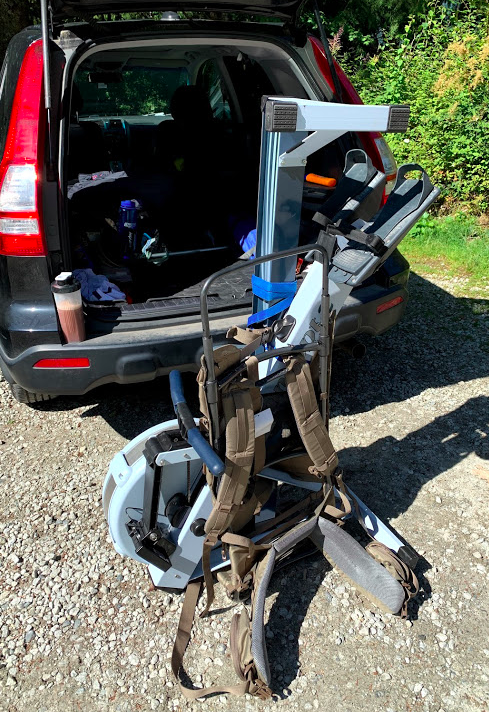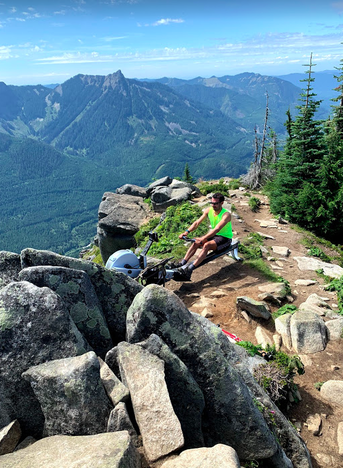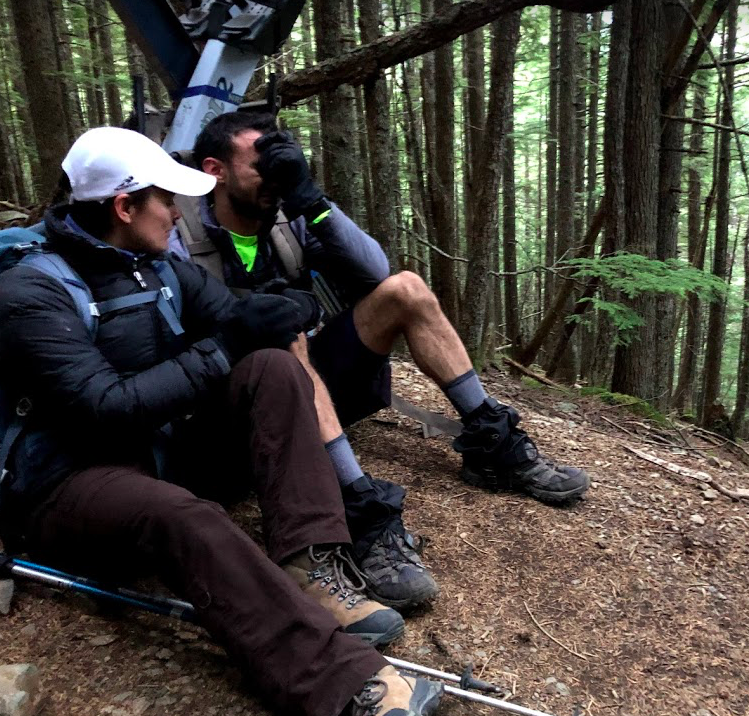|
As rowers, we learn to push ourselves to the limit. We encounter moments in which we discover our potential and realize just how far we can go to achieve a goal. These moments and experiences look different for everyone, especially Sammamish Rowing Association’s (SRA) coach, David DeWinter. DeWinter joined SRA over 10 years ago as a rower with no prior experience. Since then, his many years of hard work, smart training, and willingness to learn new things have resulted in multiple medal-winning performances at some of the world's most prestigious regattas for masters, including the Head of the Charles, Masters' Nationals, and Masters' Worlds. He has also spent some time as a coach for both masters and juniors to share what he’s learned during his time at SRA. 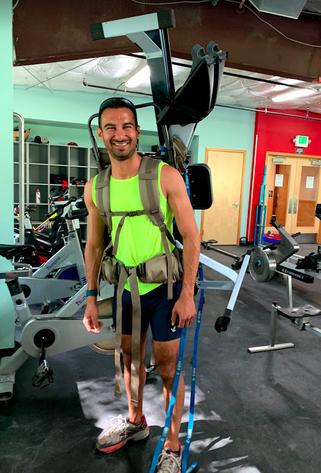 DeWinter fiddling with his erg set up at the Hod Fowler Boathouse DeWinter fiddling with his erg set up at the Hod Fowler Boathouse “Throughout my time at SRA, I slowly learned the importance of mindset and its impact on successful performances, and I had to find my own ways to train it. I came up with these challenges outside of rowing that would help me become a mentally tougher person. I figured if I could do these things, then racing in a single for four or so minutes would be a piece of cake.” These challenges included car camping for 7 days while hiking 100 miles solo along the Mountain Loop Highway, and walking 110 miles around King County without set places to sleep—from Redmond to Edmonds to South Seattle and back across I-90. This summer, DeWinter was itching for something new, and with a milestone birthday encouraging him to go big, he came up with the idea for Epic Mountain Rowing. He stumbled on the story of Matthew Disney—an ex-Royal Marine who walked between and climbed the 3 highest peaks in the UK all while carrying an erg (rowing machine), over 700km in total. At the top of each peak, Disney rowed the height of the mountain. “I thought this guy was crazy,” DeWinter added. “His challenge was called the ‘Three Peaks Challenge,’ which made me think of the ‘North Bend Triple Crown’ challenge, and what it would mean to apply the rowing machine to that.” The North Bend Triple Crown is a local bragging right bestowed on hikers who scale Mt. Teneriffe, Mailbox Peak, and Mt. Si in 24 hours. The mountains range in height from 3900ft to 4800ft, so taking an erg up each of them in the same amount of time was non-trivial. “It was definitely crazy,” DeWinter added, “but at least it seemed possible.”
That’s when DeWinter learned about external frame backpacks. Hikers use these packs to secure all sorts of loads to the rigid frame they provide. For example, hunters often use them to carry out large game from the backcountry. He ordered a pack and got to work on attaching the erg. It took him several attempts, some including boat straps, bungees, and other configurations, before he found something that worked. He would test each configuration by walking longer and longer distances. “At some point I thought, ‘Okay, I better try carrying this up a mountain.’” 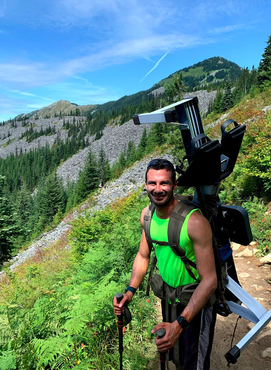 A test hike with the erg A test hike with the erg In early August, Coach Ethan Currie and DeWinter went to Bandera Mountain and made their way up slowly with the erg. “It was so difficult, because I had not done a lot of training to do a whole mountain,” he admitted. Even though the 8-mile hike took around seven hours to complete, they were successful, and the challenge became real. Joining the junior rowers’ Ergathon fundraising efforts that will end on November 15th, DeWinter created social media for the challenge he branded Epic Mountain Rowing. On August 14th, the day after hiking Bandera, his adventure was announced, and he was committed. While DeWinter was experimenting with the frame pack, junior rowing alumnus, Alex Sitzman, asked if he could join in on the challenge. Sitzman trained independently from DeWinter, but they collaborated on pack set-up before Sitzman went to Oregon in mid-September to begin his first year of college. Training was unique. Unlike a marathon or weight lifting competition there were no training plans to buy or personal trainers to hire. DeWinter said about his training, “Here’s what I knew. I’d be hiking with a bunch of weight, and I’d be hiking for 30 miles. Those were the key components. The training involved identifying my current weaknesses, and being laser-focused on correcting as much as possible before the actual event. For example, I have to be on my feet for 30 miles, so I need to practice getting that much mileage without worrying about blisters. A lot of the training involved walking, running, and hiking without the pack for many miles. This told me whether or not my shoes were right. If I felt debilitating pain, I needed to change something. “The second part of it was handling the weight. This one I didn’t feel as regimented about. Due to external pressure I had to be time-efficient with my workouts, so I did lunges with weights up and down the path and focused on heavy lifts in the gym. I couldn’t make it up to the mountains as much as I originally intended, but I went just enough to feel that I had fixed my major problems. About four days before the event, I did one last hike up Mount Si with the erg, and I felt incredibly powerful and confident for the challenge.
DeWinter had recruited a team of volunteers for each mountain for both Sitzman and himself. Their job was to help with safety, provide support, talk to people on the trail who were curious about the group, and document the effort for social media. Although it seemed like smooth sailing on the day, DeWinter had to deal with some stress after a last-minute volunteer cancellation and a nervous rush to get the GPS tracking system running about 15 minutes before the start time. With all of that out of the way, all he had to do now was focus on the mountains. At 1 PM, they set off on the trail to the summit of Mount Teneriffe. The 13-mile trail was the longest of the 3 mountains, but despite that, DeWinter mentioned that the first peak went relatively well. He kept a good pace and felt confident about his progress. His strategy for each mountain included planned stops for refueling and rest as well as tracking landmarks to help break up the mountain into manageable chunks. 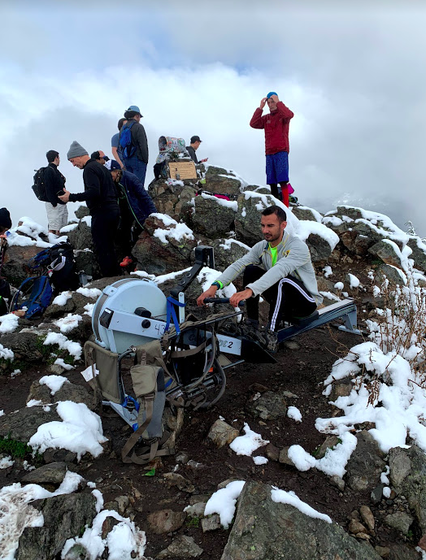 At 8:30 PM, DeWinter moved on to Mailbox Peak, where he began to feel the difficulty of his challenge. In the darkness, he and his crew marched onward, but DeWinter began to struggle. “I didn’t want to stop,” he said, “but the environment and the circumstances made me really frustrated.” Even though he had broken the trail down into sections, and he was aware that the boulder field had many false summits, the trail just seemed to be longer and more difficult in the dark. After summiting at midnight, DeWinter was tired, agitated, and clearly not at the top of his game. In a moment of clarity, he recognized his struggle and asked his friend and SRA 5am rower Trish Miller to videotape him. It was important to him not to hide struggles from the camera. “There are so few chances that I get to be real with an audience about struggle. I know sometimes athletes see us [coaches] as invincible, and it was important to me to break down that myth.” That exercise, while excruciating, helped him calm down and rediscover his rhythm. He and his crew eventually made it off Mailbox about 3 hours later.
“5 minutes after Celine and I sat together, I was in good spirits to continue. My body clearly needed some way to deal with the stress, and in that situation, crying was the path of least resistance. Having a supportive crew to feel comfortable enough to do that in front of was also important.” Despite the struggle and moments of darkness on his adventure, DeWinter ultimately succeeded and finished his Triple Crown Challenge in under 24 hours. The final time was 21 hours, 25 minutes, and 19 seconds. When asked how he felt once he had finally finished, he said, “It’s interesting that there wasn’t the grand sense of relief that you might expect. Towards the end of Si, maybe the last 1,000 meters, it wasn’t a sprint to the finish line. At that point I knew I could finish in the time limit, and the pressure dissolved. I just wanted to get the erg to the car. After some moments of reflection, it was really satisfying to feel this sense of connection that we [the SRA community] could make together in such a short amount of time: Alex and I doing this crazy adventure, volunteers going with us who didn't know each other before this... We had created this crew that was kind of like the Lord of the Rings. Then there was everyone watching, donating, following along, and it just felt so powerful. My little idea created such a broad impact, and it felt quite special.” While DeWinter and Sitzman were just individuals taking on an extraordinary challenge, they had the support of the SRA community behind them and physically with them on their journey. “I think that a characteristic of a really powerful community is the ability for the people inside of it to do extraordinary things, and the community rises to support them,” DeWinter said. “Sammamish is one of those communities.” 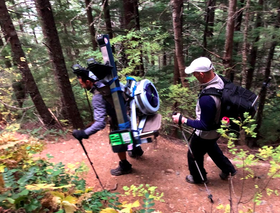 Congratulations Dave on one of the most incredible athletic feats you've ever accomplished! Dave and Alex ended up raising just over $11,000 for the Sammamish Rowing Scholarship Fund, which is more than double their goal! Continue to read “Rower Stories” from the SRA website to discover more amazing individuals of our rowing community. |
Archives
April 2023
Categories
|
|
Sammamish Rowing Association
5022 W. Lake Sammamish Pkwy NE Redmond, WA 98052 [email protected] 425-653-2583 |
Mailing Address:
Sammamish Rowing Association P.O. Box 3309 Redmond, WA 98073 |
|

